Last Updated: March 29, 2024
Many are familiar with Japan’s seemingly bizarre and unusual approach to advertising—incorporating elements of cuteness, silliness and extravagance in a way we rarely see in Western countries.
Yet, in one of the world’s biggest and most advertising sectors, where longstanding dynamics between media companies, big corporations, traditional advertising, and talent agents are entrenched, there is a method to the madness.
For those looking to advertise in Japan and engage the local consumer market, here’s our industry overview!
Advertising in Japan — Market Overview
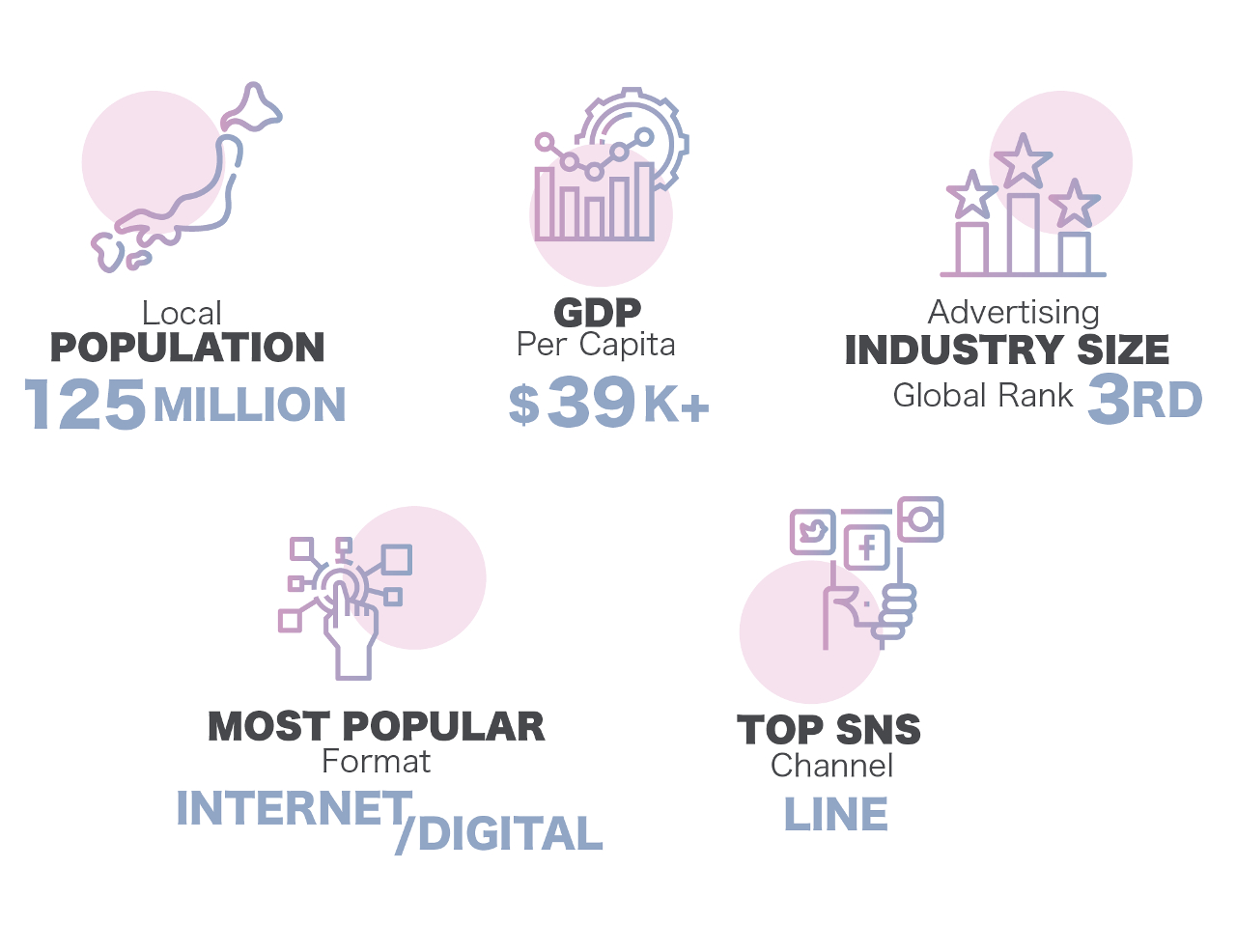
Top Ways to Advertise In Japan
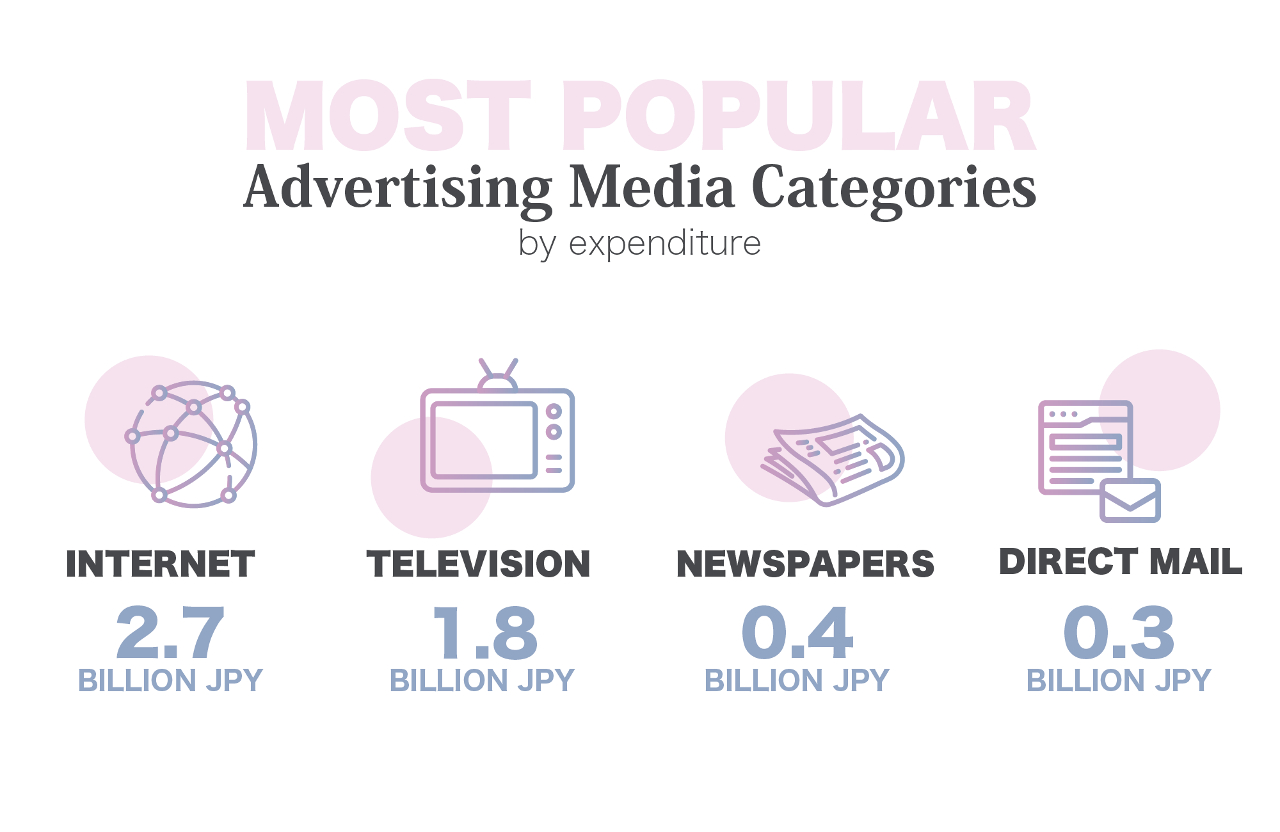 Source: Statista
Source: Statista
Until not long ago, television was the most popular way to capture the attention of Japanese consumers. After several years of strong growth however, online ads eventually overtook television advertisements for the first time in 2019 — a trend that took place much earlier in most developed nations.
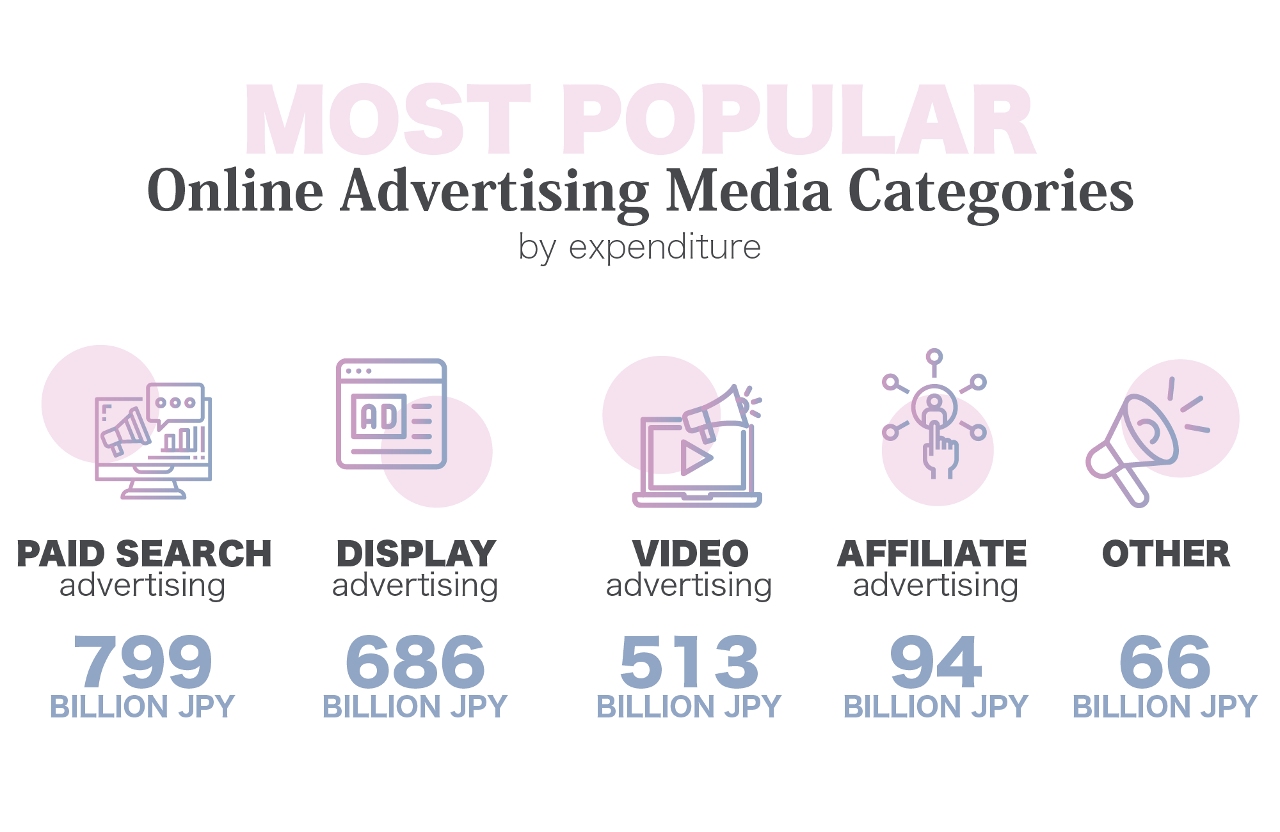
Source: Statista
Top 5 Japanese Advertising Trends
| Video Marketing | From Instagram and YouTube ads to 15-second commercials on Tokyo’s metro system, video content dominates in Japan. Brands have heavily invested in video advertising over the last 5-10 years as channels have become more saturated and the performance of static image ads declines due to saturation and competition. |
| Celebrity Endorsements & Influencer Marketing | Celebrity personalities have long been a cornerstone of Japanese advertising output, with many campaigns centered on the popularity of individuals. You’ll find the faces of renowned actors, pop stars and comedians splashed across the digital screens of every city. Endorsements are also important on social media, with influencers playing a vital role in establishing trust and a sense of acceptance for products and brands. |
| Personalization | Japanese companies are moving heavily towards “hyper-personalization” with the help of data and better tools and tech to understand and leverage it. Many underestimate the level of diversity that exists in Japan despite its homogeneous and collectivistic nature and it’s incredibly important to tailor advertising content to specific demographics and tastes. |
| Multi-channel Advertising & Marketing | As is the case with consumers in other markets today, the individual buying journey is complex and made up of many touch points. The most successful brands are tying together both physical and digital marketing (across all channels and mediums) with aligned strategies and messaging. It’s all about ensuring a high quality and consistent experience across all online advertising touchpoints today, from your Instagram page to your Google Ads. |
| Social and Mobile-First Advertising | Mobile is the primary platform for most activities like online search, entertainment and purchases in Japan. People living in urban areas spend a huge amount of time on their phones when traveling to and back from work and trust in mobile ecommerce has grown, meaning consumers are happy to finalize purchases on their devices on-the-go. All advertising output (including design, length, style etc.) must be built for mobile first! |
More Japanese Advertising Trends!
Top SNS Platforms In Japan
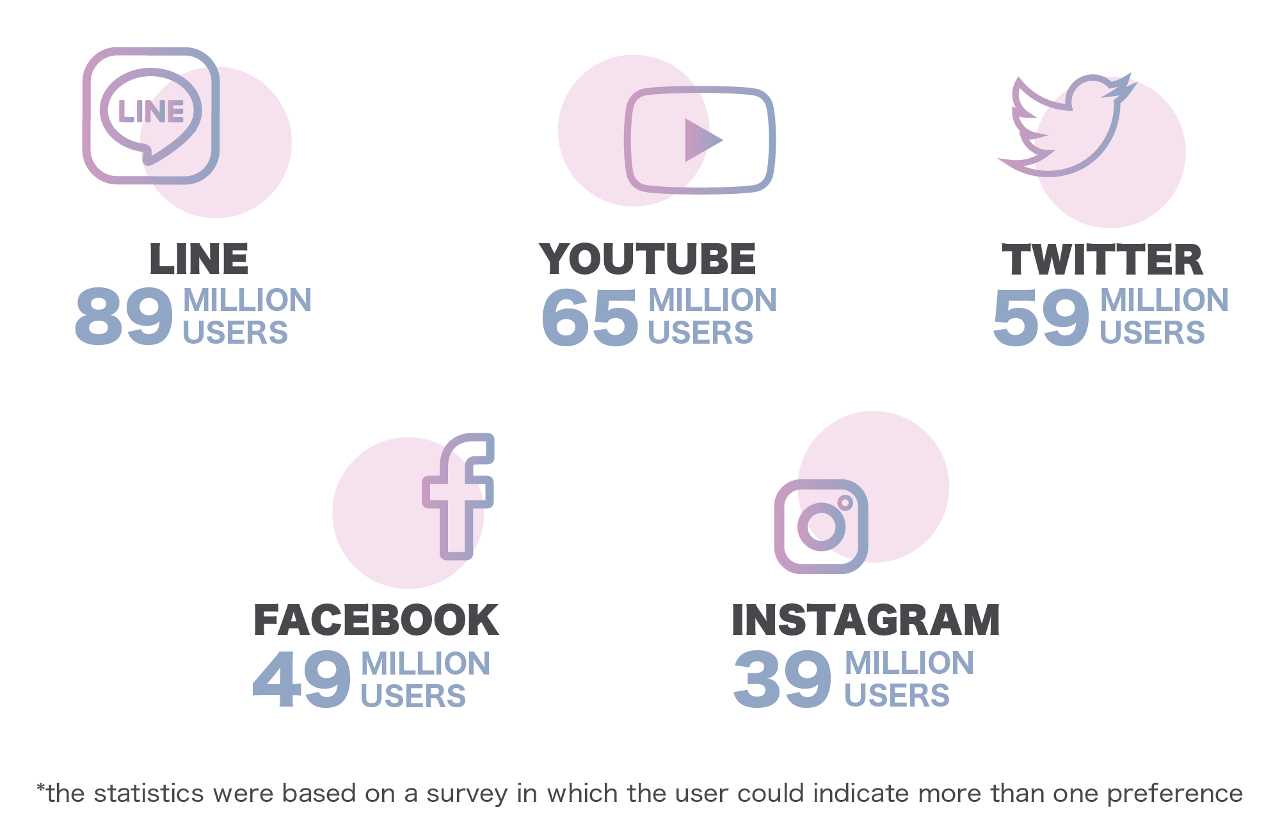
Source: Humble Bunny
The Japanese Advertising Landscape
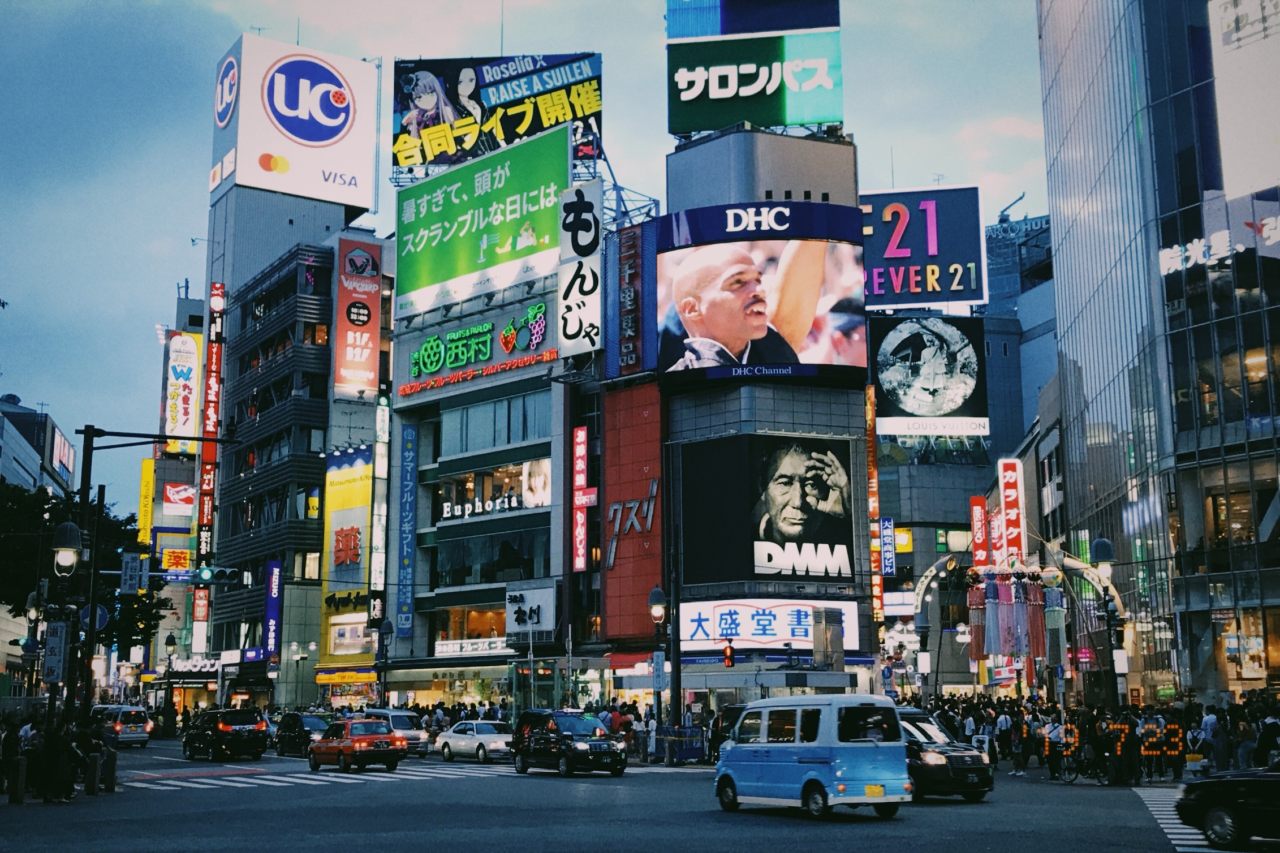
The advertising landscape in Japan is still dominated by long-established dynamics between big brands and corporations, and the media and advertising agencies that serve them, such as Dentsu — the largest ad agency in Japan and the fifth largest globally.
While these relationships still exist and expensive traditional ad space (television, radio, print) remains incredibly sought-after in Japan, digital advertising and marketing has offered a healthy amount of disruption to the scene, offering lower barriers to entry and costs for smaller brands wanting to make a name for themselves.
These new pathways and the support of accurate targeting options across platforms like Meta/Facebook provide foreign brands a better chance of carving out a slice of the market.
What Do Consumers Want?
Some assume Japan is heavily “Westernized” or at least “globalized”, with its appreciation of imported brands from America and Europe, but the truth is that Japanese consumers differ in many ways to those found in other markets.
Customers will almost always opt for domestically manufactured products from recognized Japanese brand names unless they have a good reason to do otherwise, such as shopping from a well-known luxury brand from Europe to support status and image.
The Japanese population are also used to a different style of advertising and one of the best examples of this can be found in the heavy preference for soft sell tactics over hard sell by brands and advertising agencies in Japan.
| Soft Sell Tactics | Strategies that sell products without being too pushy. Advertisements focus on delivering a kind of rewarding experience to viewers, which can be completely abstract to any particular product or service feature. Brands are focused on delivering something unique or atmospheric that people can experience — helping to create positive associations with a product or brand name that will influence their purchasing decision later. Some argue this is a way to respect the consumer rather than “intrude” on their space in a culture that hates confrontation. |
| Hard Sell Tactics | This strategy emphasizes the product and its benefits, offering several reasons customers need to buy, such as price and strength over direct competitor products and brands. Hard selling is often perceived as exaggerated and aggressive, with bold claims made to convince customers they should buy now or that their lives will be worse off if they don’t. |
Learn More About Japanese Adverts
Japanese Consumer Traits
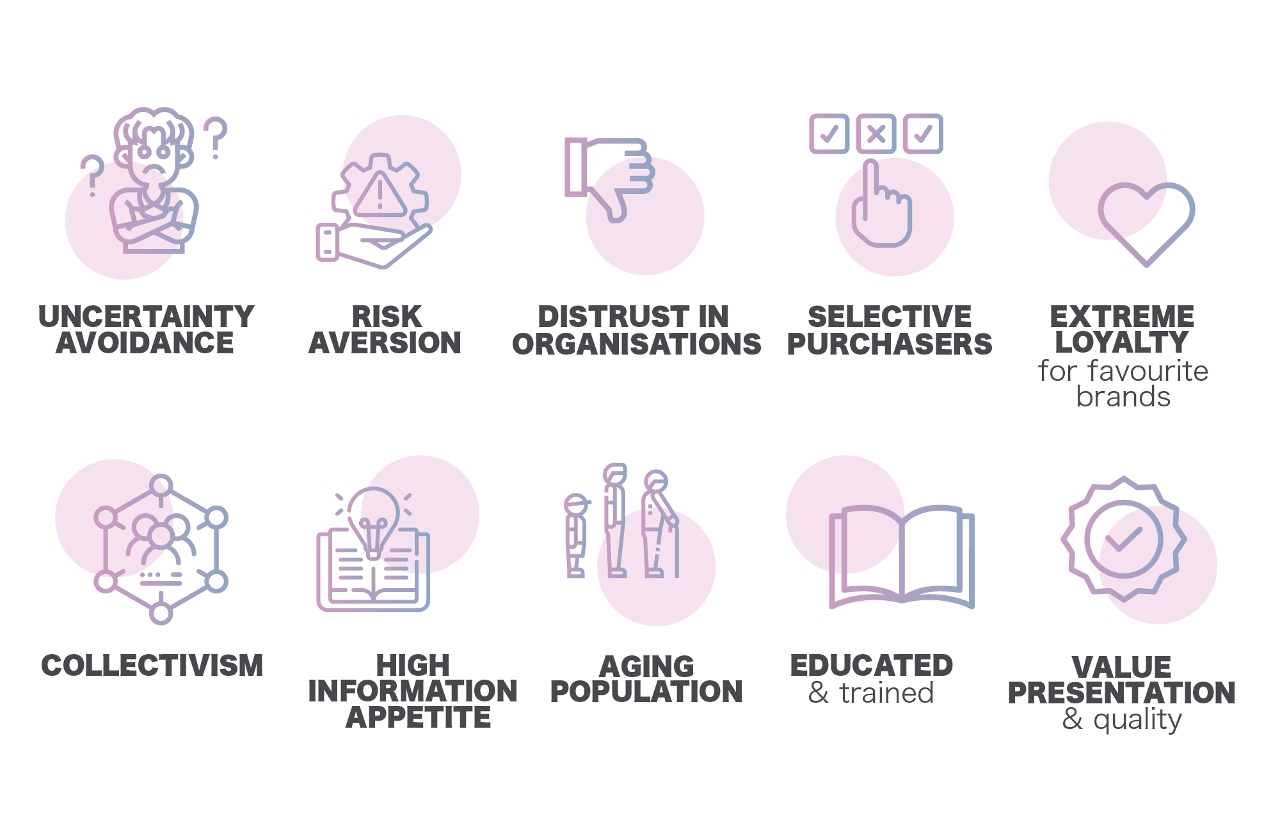
Learn More About these Consumer Traits
Top Japanese Advertising Trends in Japan
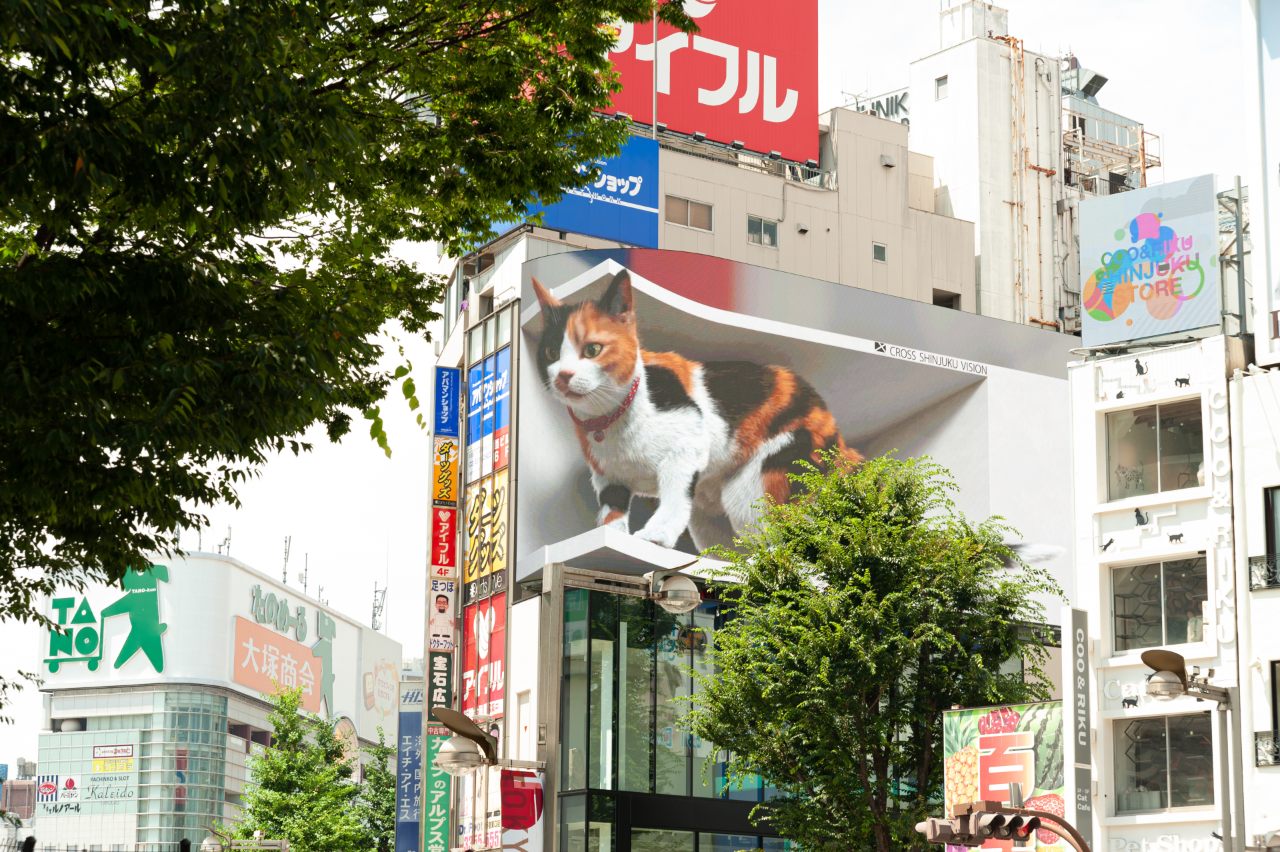
When compared to ads from other nations, there’s no doubt Japanese advertising stands out as being exceptionally quirky, unusual, and often just different to what we’re used to. And even though you might see some of the same brand names in Tokyo as you will in London or New York, brands will often take a very different approach to the Japanese market. A few classic elements that standout as being uniquely Japanese include:
| Cuteness | Whether you sell car parts or toys, it’s widely accepted for all brands and businesses to leverage the power of cuteness when they advertise in Japan. Ads that people find touching because they’re cuddly, endearing, or heartwarming are proven to do well and masculinity is used notably less than places like the US to connect with consumers. You’ll often find nursery-style like jungles, cartoons and children portrayed in ad campaigns crafted to strike that all-important connection with consumers. |
| Detachment from reality | You’ll find fantasy or out-of-this-world elements in many Japanese advertisements. This may feature real life models or animations. Scenarios often depict bizarre or intriguing scenes that are designed to capture people’s attention. |
| Manga and animations | Japanese consumers have a huge appetite for animation and manga, even in the form of advertising. Many brands use Manga in their adverts or even create their own mini-comics to strengthen their brand image and relationship with customers. |
| Symbolism and seasonal marketing | Japan’s national holidays and seasons often influence the approach taken by advertisers. In a highly homogenous high-context nation with distinct periods of celebration, linking promotions, commercials and even product development with seasonal themes is a popular and effective approach. |
Localizing Your Japanese Advertising Strategy
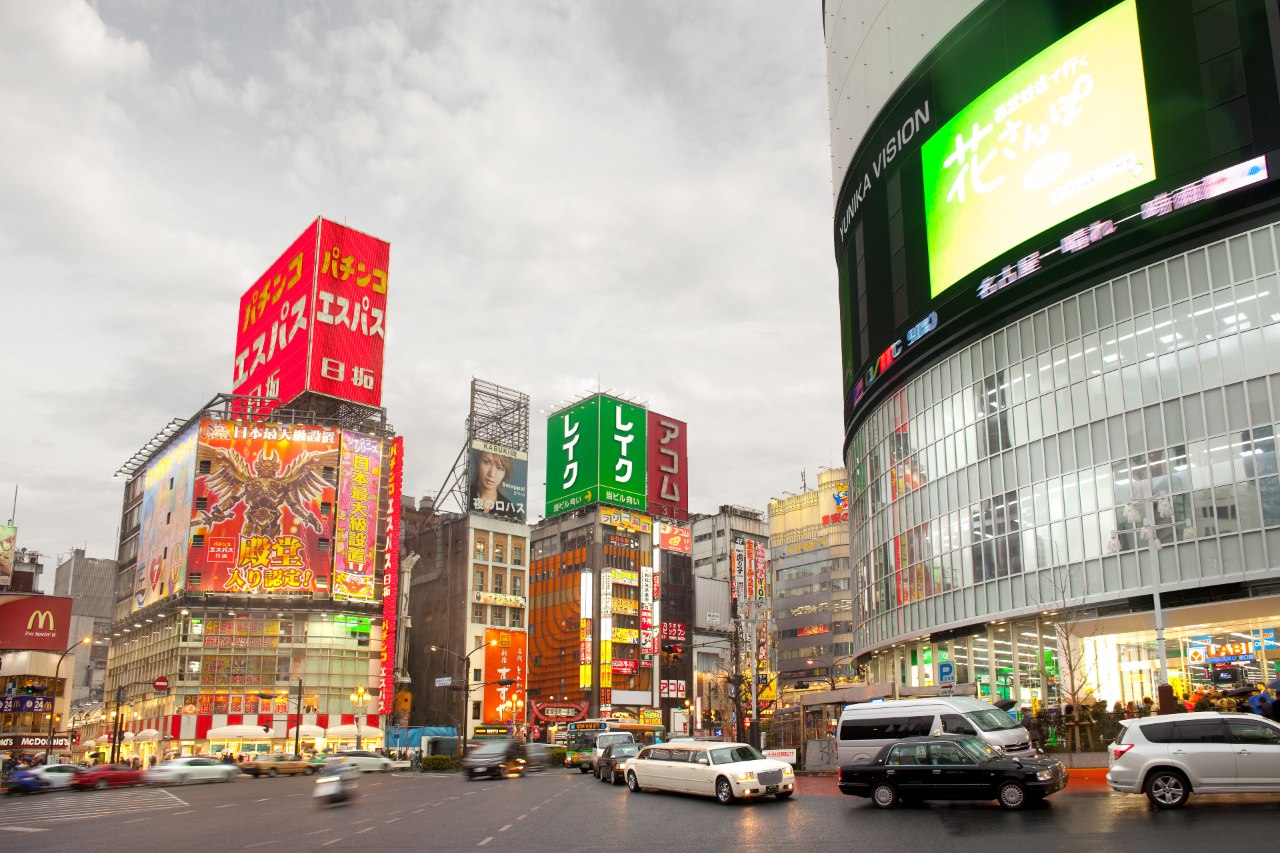
When you advertise in Japan, you need to localize your strategy and content. This includes everything from the core creative concept you are trying to convey to the way you execute photography and design. Some of the biggest risks for foreign brands and sellers that don’t localize effectively include:
- Consumers move to competitors when your adverts are perceived as irrelevant, generic, or “low quality” for their standards
- Poor feedback from users might spread negative messages about your brand and products
- The inability to create a strong connection with your new audience
- Your ads will be ignored or misunderstood by your audience
Insider Tips: An Advertising Expert on Navigating the Japanese Market
Milosz Bugajski, Partner & Advertising Lead at Humble Bunny, offers valuable insights for those considering advertising in Japan. Based on his recent discussions with various industry professionals, Bugajski observes a strong demand for performance-based marketing and advertising. However, a disconnect exists – many companies haven’t fully embraced performance-based strategies, perhaps due to the complexity involved. Additionally, Japan has operated in a “safe bubble” where less rigorous performance metrics were tolerated or covered with excuses like ‘it’s a different market, we need to build brand awareness, etc”. This might be changing, partially due to the looming economic downturn. Clients are getting stricter and there is much more pressure on performance and results otherwise the marketing budgets might be cut, or brands might limit advertising operations in Japan or withdraw from the market altogether. This could lead to a competitive ‘survival of the fittest’ environment where only the most effective advertisers survive in Japan.
Bugajski’s advice? Stay curious and experiment. Analyze successful campaigns to understand the “why” behind their success, considering cultural and psychological factors relevant to your target audience. Thorough market research is crucial. Be prepared for a financial investment in the short- and mid-term. Profitability in the Japanese market might take months, requiring additional effort in localization, conversion rate optimization (CRO), and building social proof. Patience and continuous optimization are key. While challenging, the Japanese market can be rewarding for those who play the long game.
Connect with Milosz on LinkedIn.
Advertise in Japan – Top FAQs Answered
You may be able to advertise in Japan from abroad, through an existing agency relationship at home when it comes to setting up basic campaigns. However, when it comes to buying important media space and producing high quality creative content, local talent is always needed. Advertising can be quite expensive in Japan. Optimal budgets differ for all platforms and mediums, but many smaller brands will find it difficult to afford to place advertisements in Japan’s major national daily newspapers or commercials on Japanese television. Digital channels such as search PPC and social PPC (Instagram & Facebook) offer a lower cost barrier to entry and the ability to scale, but advertisers will still need to consider a likely 10-15% increase on ad spend based on our experience. When looking at the end product, Japanese advertising still stands out as being exceptionally quirky, unusual, and often just different to what we’re used to. Working with local experts to understand these differences is key. However, advertising still plays the same role as it does in all markets and can be used to achieve the results you want by first determining (with the help of guidance and research) the kind of content that your audience will engage with. Some Western brands only succeed after several years of building credibility and strengthening their reputation in the eyes of consumers before they are “accepted”. This can take considerable investment, but is something that is incredibly important in a culture where collectivism and peer acceptance are so important. You must consider carefully which advertising styles will have a greater impact on your specific target audience before building channel specific strategies. Preferences can different between demographics considerably. Despite its homogeneity, the Japanese consumer landscape is still highly fragmented and each segment will require a great deal of personalization. Do I need a local advertising agency?
How much budget will I need to advertise in Japan?
What’s so different about advertising in Japan?
Do I need to adapt my brand and products for Japan?
What is the best way to reach Japanese consumers as a new foreign brand?
Getting Started!
We’ve helped several brands from Europe and the US looking to advertise in Japan adapt their strategies to be more effective and impactful in the local market. There’s always a challenge when it comes to migrating your existing creative, brand and execution strategy to suit Japanese preferences, but when done right, there’s huge potential to build awareness and demand for your products through advertising in Japan.
To learn more, whether you’re just getting started or looking to level up your approach, check out our PPC advertising service page, or get in touch for a free consultation.
Steal Our Best Ideas
Actionable insights straight from our data
Here are a couple quick discoveries we’ve pulled from the data of our latest projects. Why? To help you make the changes you need to gain traction in the Japanese market! As an agency, we are always digging deeper and searching for those little yet significant tweaks that will push our clients to the next level of success. If you need a partner to help you identify and implement changes like these on a monthly basis, let us know!
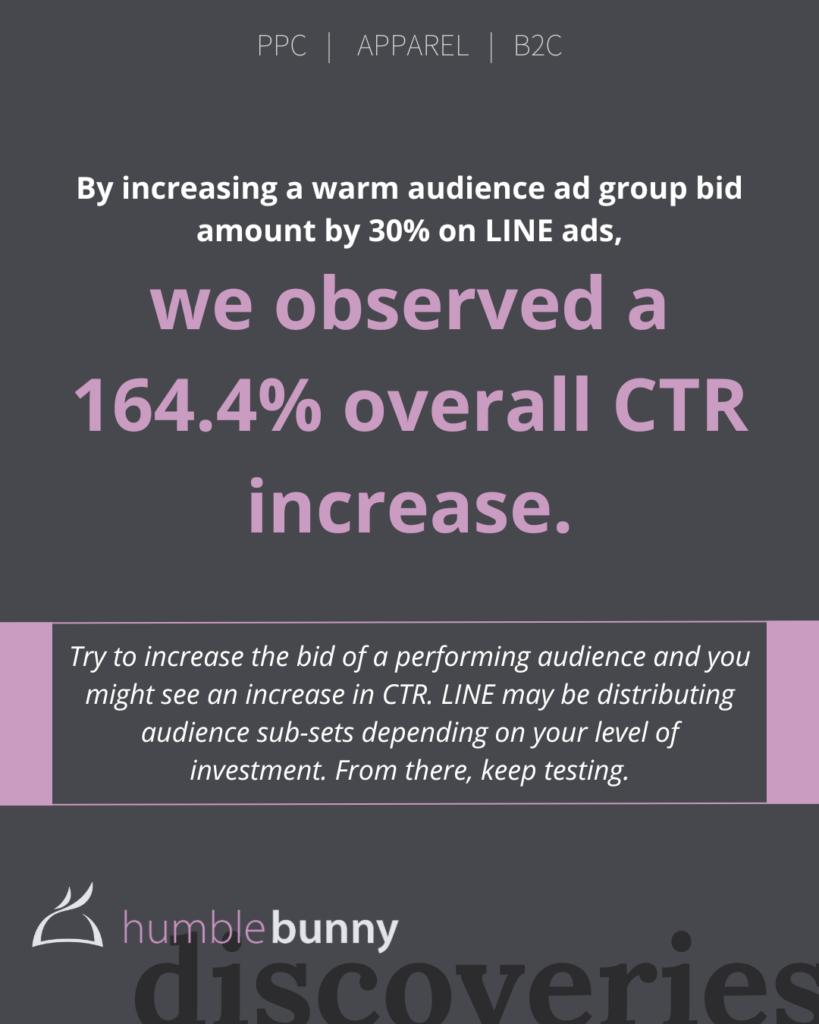
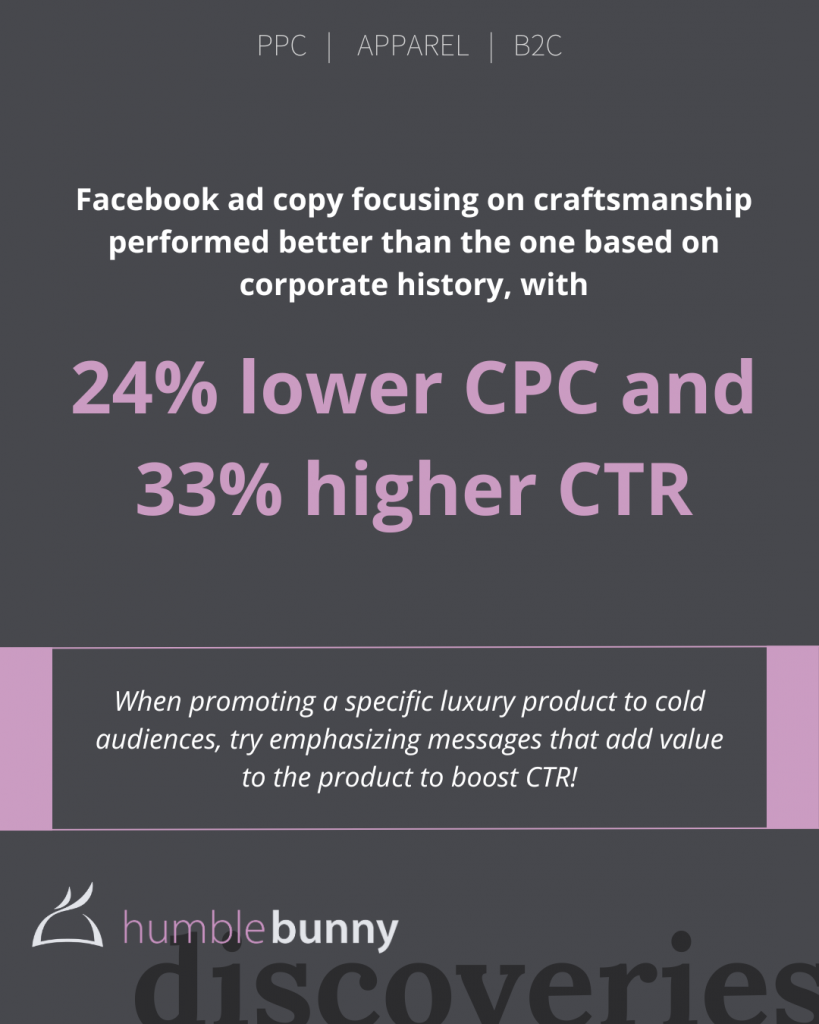
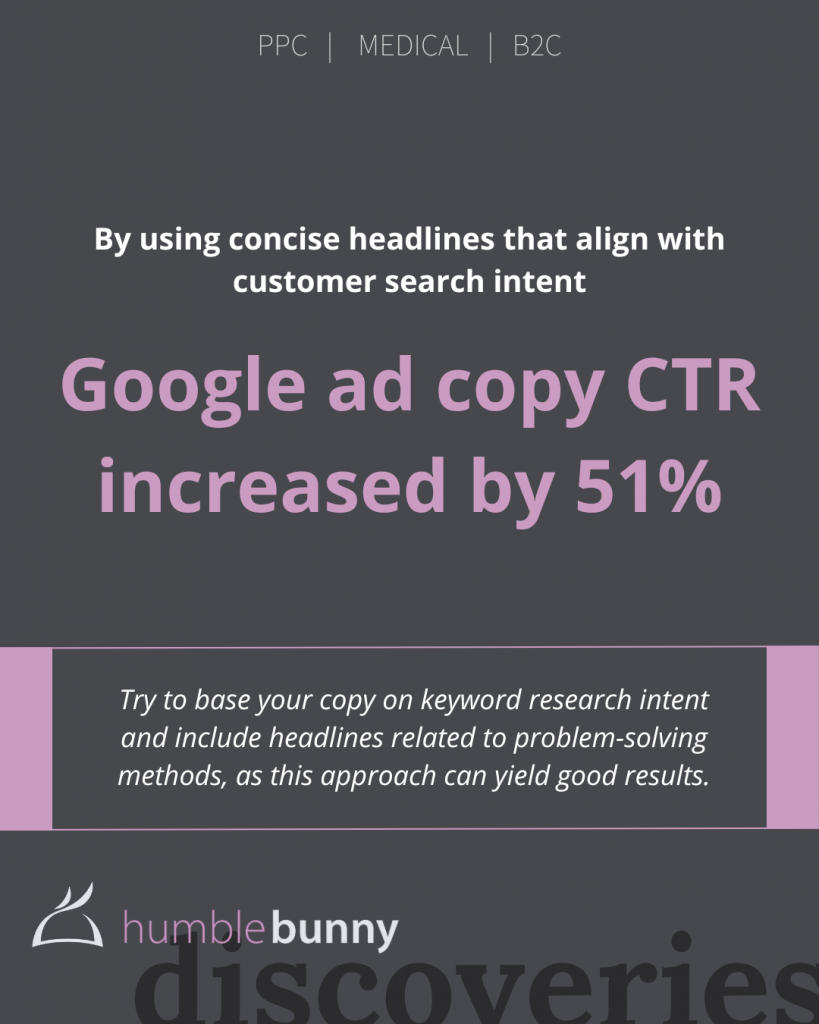
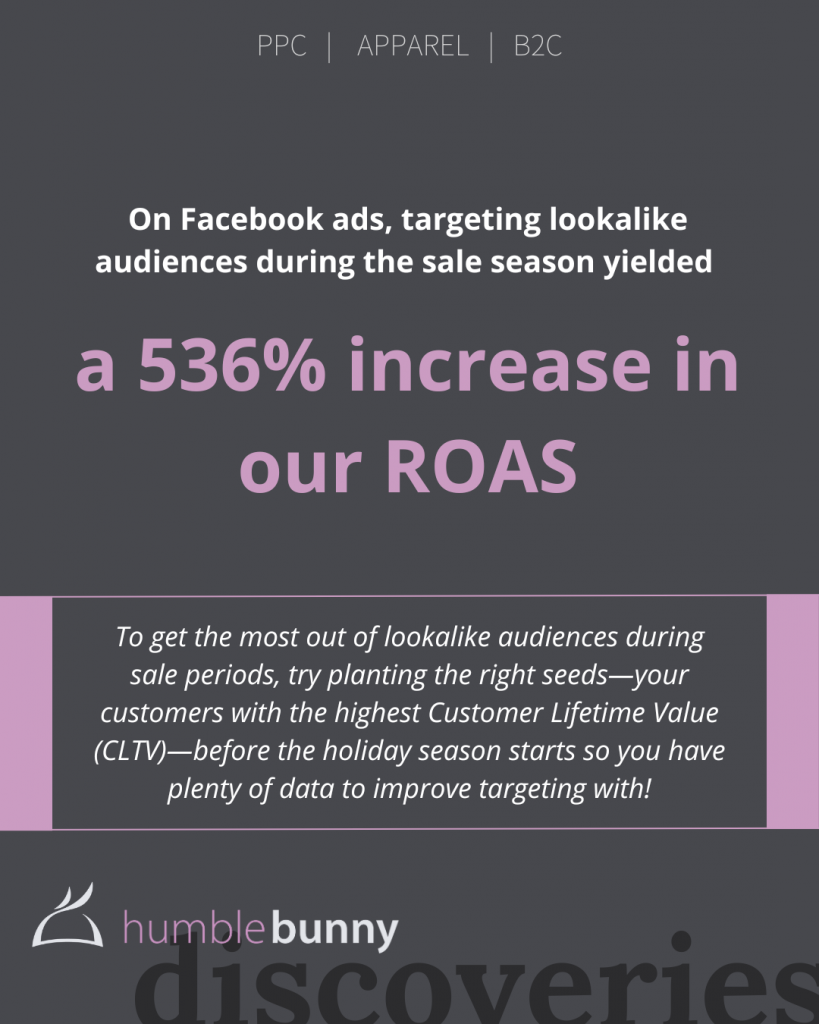
About the Authors & Voices in this Article
Jim KerseyLead Writer |
 |
Paolo RagoneEditor, Contributor |
 |